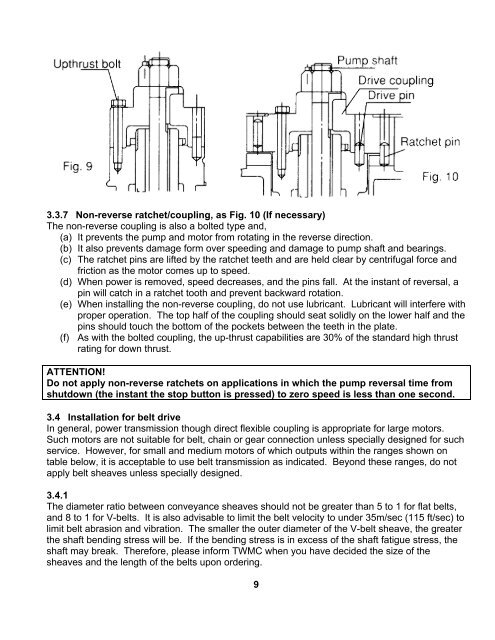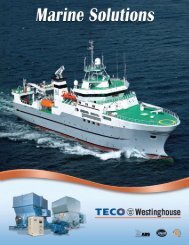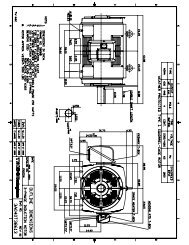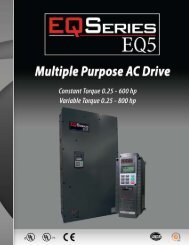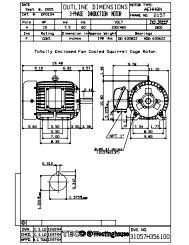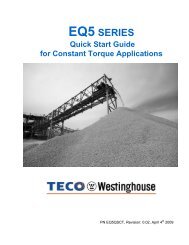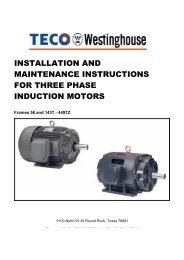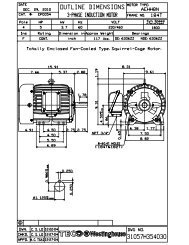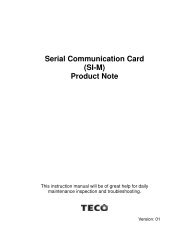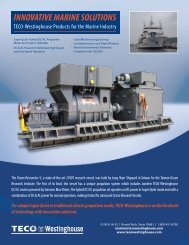OL_P1254 Model (1) - TECO-Westinghouse Motor Company
OL_P1254 Model (1) - TECO-Westinghouse Motor Company
OL_P1254 Model (1) - TECO-Westinghouse Motor Company
You also want an ePaper? Increase the reach of your titles
YUMPU automatically turns print PDFs into web optimized ePapers that Google loves.
3.3.7 Non-reverse ratchet/coupling, as Fig. 10 (If necessary)The non-reverse coupling is also a bolted type and,(a) It prevents the pump and motor from rotating in the reverse direction.(b) It also prevents damage form over speeding and damage to pump shaft and bearings.(c) The ratchet pins are lifted by the ratchet teeth and are held clear by centrifugal force andfriction as the motor comes up to speed.(d) When power is removed, speed decreases, and the pins fall. At the instant of reversal, apin will catch in a ratchet tooth and prevent backward rotation.(e) When installing the non-reverse coupling, do not use lubricant. Lubricant will interfere withproper operation. The top half of the coupling should seat solidly on the lower half and thepins should touch the bottom of the pockets between the teeth in the plate.(f) As with the bolted coupling, the up-thrust capabilities are 30% of the standard high thrustrating for down thrust.ATTENTION!Do not apply non-reverse ratchets on applications in which the pump reversal time fromshutdown (the instant the stop button is pressed) to zero speed is less than one second.3.4 Installation for belt driveIn general, power transmission though direct flexible coupling is appropriate for large motors.Such motors are not suitable for belt, chain or gear connection unless specially designed for suchservice. However, for small and medium motors of which outputs within the ranges shown ontable below, it is acceptable to use belt transmission as indicated. Beyond these ranges, do notapply belt sheaves unless specially designed.3.4.1The diameter ratio between conveyance sheaves should not be greater than 5 to 1 for flat belts,and 8 to 1 for V-belts. It is also advisable to limit the belt velocity to under 35m/sec (115 ft/sec) tolimit belt abrasion and vibration. The smaller the outer diameter of the V-belt sheave, the greaterthe shaft bending stress will be. If the bending stress is in excess of the shaft fatigue stress, theshaft may break. Therefore, please inform TWMC when you have decided the size of thesheaves and the length of the belts upon ordering.9


